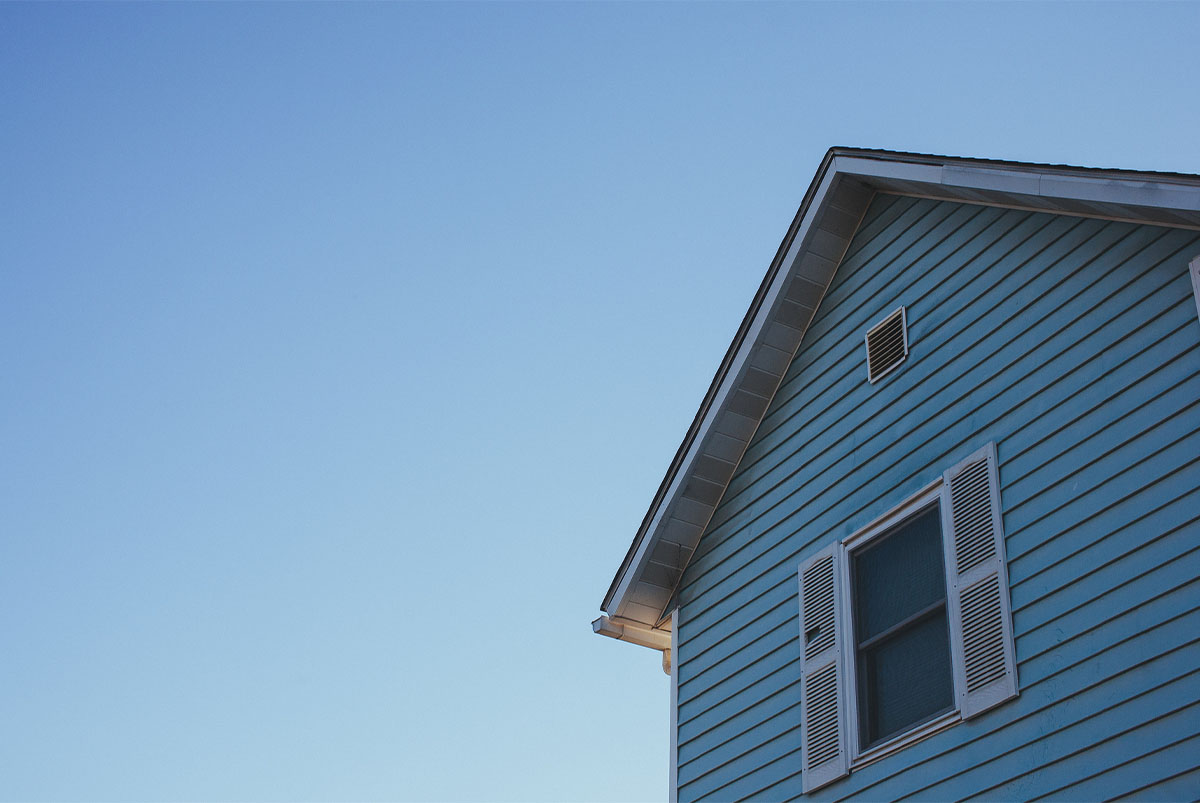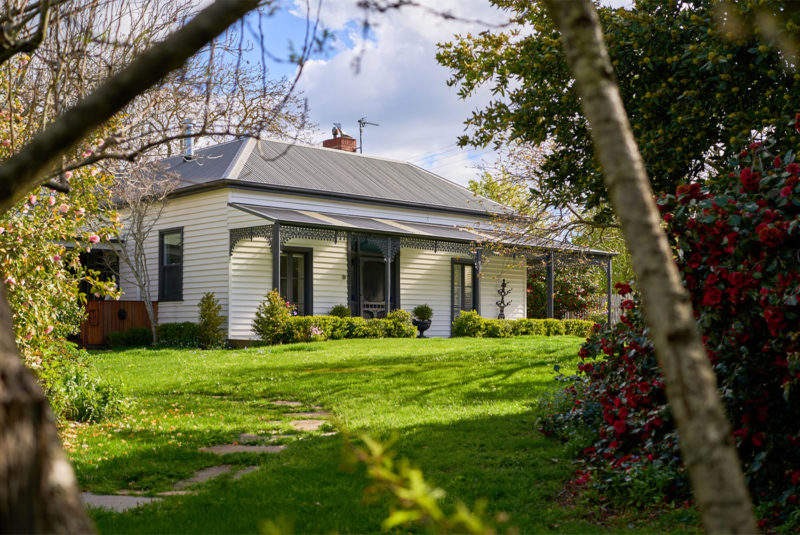Explore your mortgage options
Is your home’s exterior looking a little drab? Could your siding benefit from an upgrade? Are you interested in boosting the value of your home? If you answered “yes” to any of these questions, new siding may be sitting at the top of your to-do list. But that’s the best way to pay for new siding?
In this article, we’ll explain the different siding financing options available and how much siding usually costs to help you make an informed decision.
Need Funds for Home Improvements?
Apply for a home improvement loan from Rocket LoansSM and start planning your next renovation project.
Checking your options won’t affect your credit score.
How To Finance Siding: 7 Options
Here are seven of the most common ways to finance your new siding. Keep in mind, these financing options can also be used for other home improvement projects as well.
Home equity loan
A home equity loan lets you leverage your home equity to borrow a lump sum and repay it with fixed payments over time. A home equity loan is sometimes referred to as a second mortgage because it’s an additional, separate loan from your original mortgage.
One of the downsides to this option is that you will need to pay closing costs, and it can take a few weeks for you to secure the funding. However, the interest on a home equity loan may be tax deductible if you use it to improve your home.[1] Replacing or repairing siding should qualify.
Before you opt for a home equity loan, take note that your house will serve as collateral for the loan. A lender can seize your home if you default on your loan.
Home equity line of credit (HELOC)
Another financing option that lets you tap into your home equity is a home equity line of credit (HELOC). A HELOC functions like a credit card. You borrow money up to your lending limit (which is based on your available equity) and pay it back over time.
HELOCs are very flexible and can be a good option if you’re not replacing your siding all at once or you want to lump smaller projects in with your siding replacement.
Cash-out refinance
A cash-out refinance allows you to refinance your existing mortgage with a loan that is larger than your mortgage balance. You receive the difference between the new loan and your original loan in cash.
Because a cash-out refinance is a new mortgage, you will pay closing costs. It can take some time to get approved, and there is no guarantee that the interest rate you’re charged will be lower than your original loan’s interest rate.
Personal loan
If you’d rather not use your home as collateral for a loan, consider applying for a personal loan. Most personal loans are unsecured, so you don’t have to offer collateral to borrow money. Good credit scores and a steady, solid income can improve your chances of getting approved for an unsecured loan and scoring a lower interest rate.
Two of the biggest benefits to pursuing a personal loan are that there are no closing costs and the funds can usually be disbursed within a couple of business days (sometimes even sooner).
Personal loans usually range in value from about $2,000 – $45,000.
Get Cash Fast
Rocket LoansSM offers same-day funding for personal loans. Get prequalified and get the cash you need, fast.
Credit card
Credit card interest rates can be much higher than the rates for other types of financing, and their credit limits are typically much lower than what you’ll need to finance a vinyl siding project.
But credit cards offer borrowing and repayment flexibility, which can be appealing if you don’t want to make large monthly payments. If you’re trying to save money, keep in mind that the longer you take to repay credit card debt, the more you’ll pay in interest.
If you need to apply for a credit card, look for one that offers a 0% intro APR. To avoid paying interest on the balance, try paying it off before the introductory period ends.
FHA Loan
Consider taking advantage of a government-backed Federal Housing Administration (FHA) loan to help you with your house siding project.
You can use an FHA 203(k) loan to buy a home in need of renovations or to refinance a mortgage when you need to make renovations (like a cash-out refinance). Your renovations must cost at least $5,000, but the total value of the property must still fall within the FHA mortgage limit for the area.[2]
You may be able to get an FHA Title 1 property improvement loan. You can get the loan without tapping into the equity in your home, but you must have lived there for at least 90 days.[3] You can also combine this loan with a 203(k) loan if your project cost is high.
Contractor or company financing
Depending on where you get your siding from, you may also have the option to secure financing with the company that will install the siding for you.
The specifics here will depend entirely on the contractor or company you decide to use. In these instances, they usually partner with a financial institution that actually lends you the money. The financial institution will set the loan limits and decide what type of credit score or income verification they need to issue you the loan.
How Much Does Siding Cost?
The short answer is that it depends. Costs will vary by the type of material you use, the square footage of your property and what type of deal you can get for installation and labor.
One of the first decisions you’ll need to make is what type of siding you’d like. Vinyl siding is one of the most popular options because it’s relatively cheap. The chart below compares general pricing for different options.[4]
| Siding Type | Price (Square Foot) |
| Aluminum | $3 – $6 |
| Vinyl | $3 – $12 |
| Fiber-Cement | $5 – $14 |
| Stucco | $7 – $9 |
| Stone | $7 – $30 |
There are many more types of siding available. In addition to the raw materials used, here are some other factors that will impact costs:
- Home size: Most siding is priced by square foot. The larger your home is and the more complex the design, the more it will cost. Make sure to account for the garage if you’re including it in the siding project.
- Location: Materials, shipping, labor and cleanup costs vary by location. Over the last couple of years, prices and delivery times have skyrocketed. Be prepared for price changes and start your project as early in the warmer months as possible.
- Material quality: Even after you decide on a raw material, the caliber you choose and the brand will affect the price. The better the quality, the higher the price. Using vinyl as an example, choosing a thicker or more textured vinyl will be more expensive than a thinner, smoother vinyl. Insulated vinyl – which is great for energy efficiency – is also more expensive.
- Labor and installation: It’s not uncommon for labor to cost about as much as the materials. If you’re on a budget and you know your way around a toolbox, you may be able to save some money by installing the siding yourself if your loan doesn’t require professional installation. While we’d never knock a money-saving hack, don’t forget that when you hire a professional, you’re reducing the chances of improper siding installation that can cause future issues.
Tips for Financing Your New Siding Project
We’ve put together some tips to help you get the best value from your vinyl siding project and financing options.
Compare quotes from contractors
Request quotes from multiple contractors and suppliers. Compare prices and check references.
If you have to pay for a quote, ask if the quote’s price can be credited toward your bill if you choose that contractor. Ask the contractor to outline what the job includes (time, labor, materials, etc.) in the quote.
Estimate conservatively
Let your quote from your contractor be your guide when you decide how much money you’ll need to borrow – and add tax. Renovations almost always go over budget. Add a little more to the loan’s dollar amount (aka wiggle room) to account for the things that will inevitably cost more or go wrong.
And while there’s nothing wrong with wanting the best or most stylish type of siding, if you’re looking to save money, buy smooth traditional siding. It’s cheaper than its textured counterparts.
Talk to multiple lenders
Once you’ve decided on a contractor and have a good idea of how much you’ll need to borrow, it’s worthwhile to talk to multiple lenders. Taking the time to compare the annual percentage rate (APR) for different loans can give you a good idea of what the true cost of using a lender will be versus another one.
Final Thoughts on Siding Financing
Ideally, installing new siding will protect your home’s exterior for decades, and you’ll earn a generous return on investment. Even if you’re not planning to sell your home, a fresh face-lift can enhance your home’s curb appeal and your enjoyment of your home’s exterior beauty.
Where you live, the size of your home and the type of siding you choose all play a part in how much the project will cost and how much financing you’ll need. The good news is you’ve got plenty of options to choose from.
Home Improvement Is Worth It
Prequalify for a personal loan from $2,000 to $45,000 from Rocket LoansSM and make your dream home a reality.
The Short Version
- If you want to borrow against the equity in your home, consider a home equity line of credit, home equity loan or cash-out refinance
- To finance without using home equity, consider a personal loan, a credit card with 0% intro APR or an FHA loan
- Siding costs will vary depending on the material you use and the size of your home. Vinyl is one of the cheaper options available, while stone is generally more expensive
Internal Revenue Service. “Real Estate (Taxes, Mortgage Interest, Points, Other Property Expenses) 2.” Retrieved January 2024 from https://www.irs.gov/faqs/itemized-deductions-standard-deduction/real-estate-taxes-mortgage-interest-points-other-property-expenses/real-estate-taxes-mortgage-interest-points-other-property-expenses-2
U.S. Department of Housing and Urban Development. “203(K) REHABILITATION MORTGAGE INSURANCE PROGRAM TYPES.” Retrieved January 2024 from https://www.hud.gov/program_offices/housing/sfh/203k
U.S. Department of Housing and Urban Development. “ABOUT TITLE I PROPERTY IMPROVEMENT LOANS.” Retrieved January 2024 from https://www.hud.gov/program_offices/housing/sfh/title/ti_abou
HomeAdvisor. “Install Siding.” Retrieved January 2024 from https://www.homeadvisor.com/cost/siding/install-siding/




